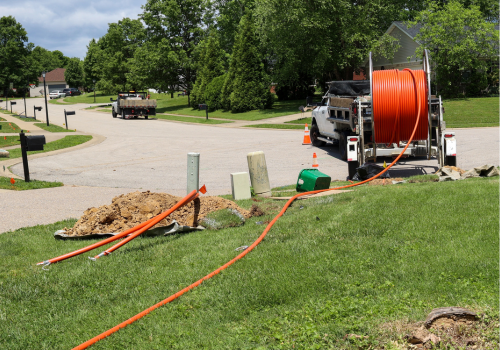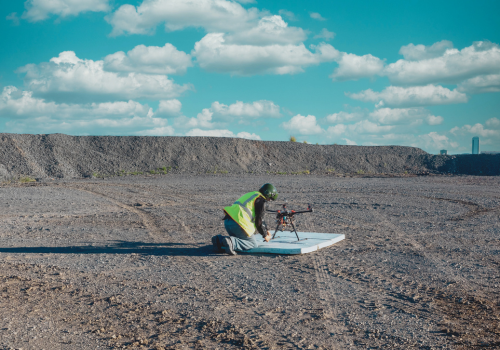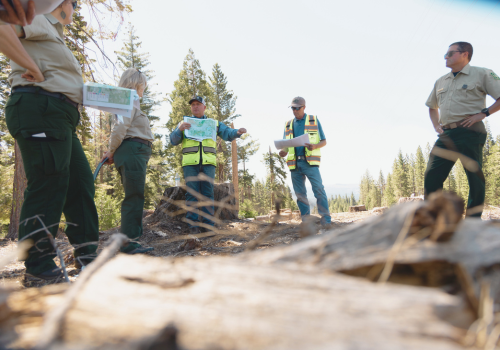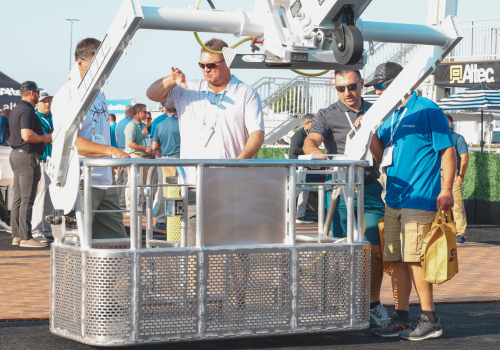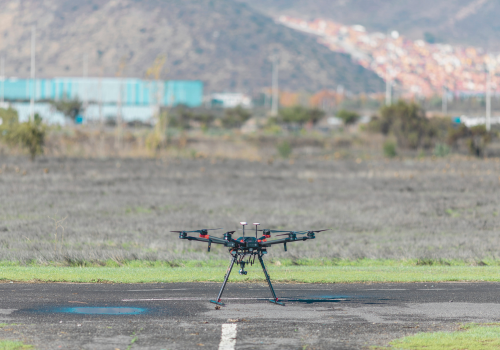Utility companies are increasingly using drones.
According to the report: “Drones In Energy Industry Report 2022” worldwide commercial drone market will hit some $41.3 billion by 2026 and energy companies will comprise the largest part of that market—approximately $6 billion of it.
Gas and water providers use drones to inspect their own infrastructure, monitor nearby bodies of water and construction sites, and survey areas for future expansion.
Renewable energy providers use drones to inspect and monitor solar farms, wind farms, as well as search for places to convert into new farms.
Faster, cheaper, safer, better
The benefits of using drones for inspection and surveillance are too great to ignore.
Drones offer utility companies the following benefits:
Enhanced safety
Drones can access dangerous or difficult-to-reach locations, which significantly decreases the chance of a person injuring themselves while performing the inspection.
“People don’t need to go up on a lift or climb anything; the pilot and visual observer can perform the inspection standing in a safe place,” says Vernon Shurtz, Project Manager, Association for Uncrewed Vehicle Systems International (AUVSI)— the world's largest nonprofit organization dedicated to the advancement of uncrewed systems and robotics. The organization represents corporations and professionals from more than 60 countries involved in industry, government and academia. (AUSVI hosted an education session on drones at The Utility Expo 2023.) “Also, power companies still sometimes send inspectors in helicopters. And the helicopter will hover near the power lines and electrical towers while the inspector uses binoculars to inspect. However, now you have a helicopter flying at low altitude near power lines . And there have been fatalities associated with that.”
Cost savings
Drones can complete many of the above mentioned jobs at a fraction of the cost of sending a person to do them.
“In Florida, power lines run through swamps,” says Shurtz. “And I’ve seen utility companies install semi-floating roads so they can send a cherry picker to inspect the infrastructure, which is quite costly. They only need to send this equipment out if there’s damage, but they don’t know if there’s damage unless they have eyes on it. So, with drones, you can inspect more safely, with greater efficiency, at lower cost, and more regularly than with other methods.”
Increased efficiency and productivity
Drones can cover large areas in a shorter time frame, which reduces the time required for inspections, repairs, and maintenance calls.
“In southern California, they have a lot of fires in the summer related to energy usage,” says Shurtz. “California relies on several other states to supply it with power, so power lines traverse the desert to feed California with power. To avoid these fires, each year, the utility companies contract drone companies to take pictures of all the lines, insulators, etc. Then inspectors go through all the photography, identify any items that require attention, and send someone out there. The labor power required to perform in-person inspections makes the endeavor cost-prohibitive.
Improved asset management
By using drones for regular inspections and monitoring, utility companies can gain better insights into the condition of their assets, which will lead to better decisions and less waste.
“Inspections can be performed with a regular color camera or a thermal imagery camera or a Lidar camera,” says Shurtz. “When lines or connectors degrade, they heat up, so a thermal imagery camera is best for detecting degradation on electrical infrastructure. With a Lidar camera, you can get accurate positional information. Utility companies use Lidar to ascertain positional information of power lines and electrical towers. Then, after experiencing extreme weather, they again use the Lidar to attain positional information of those lines and towers. You put those two images together and you can see if anything has moved. Perhaps one tower is now leaning by two degrees. Then they send out an inspector to ascertain why. There could be erosion or buckling of the structure.”
Rapid response to outages and emergencies
“With drones, utility companies can quickly assess damage, identify affected areas, and plan restoration efforts,” says Shurtz. “The real-time data provided by the drone allows for swift decision-making and efficient deployment of resources, leading to faster restoration times, and improved customer service.”
Drones offer numerous benefits to utilities companies. “With drones, utility companies can inspect more safely, with greater efficiency, at lower cost, and more regularly than with other methods,” says Shurtz.
Read Next
Expert Pilot Answers the Biggest Questions About Drones
The Future of Drones in Utility Infrastructure Maintenance
Drone Powerline Inspection: What to Consider and How to Choose the Best Drone


